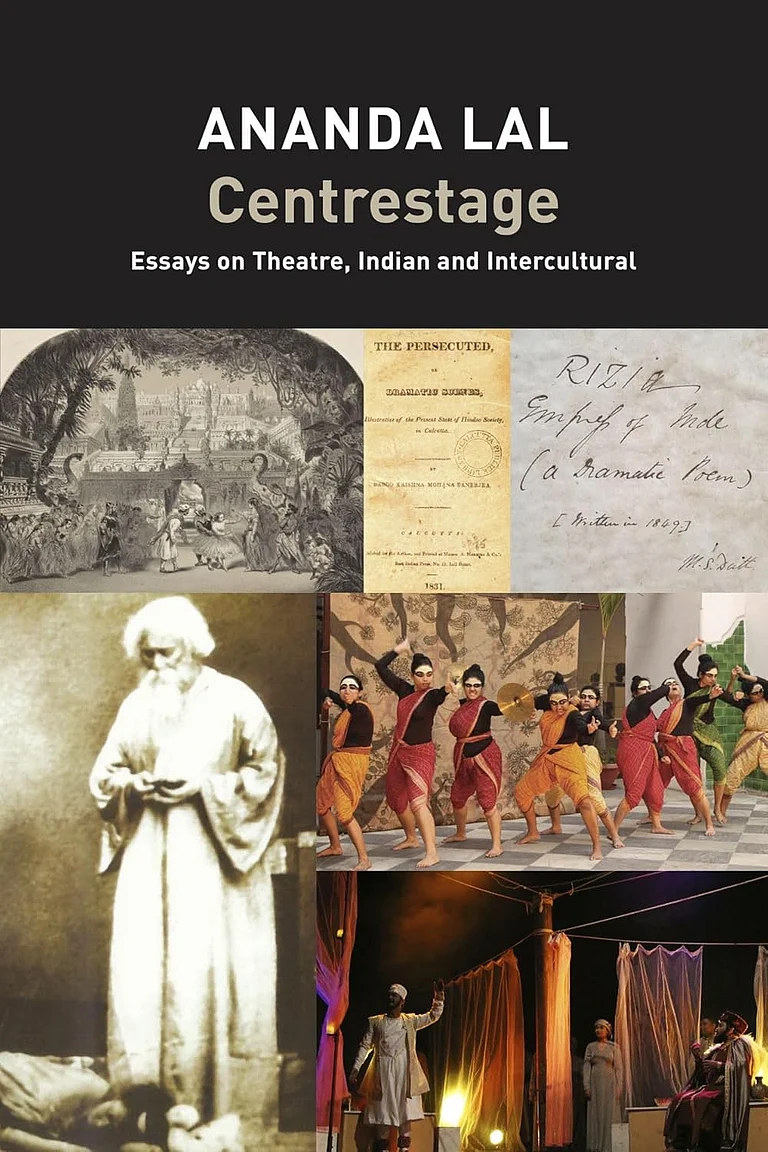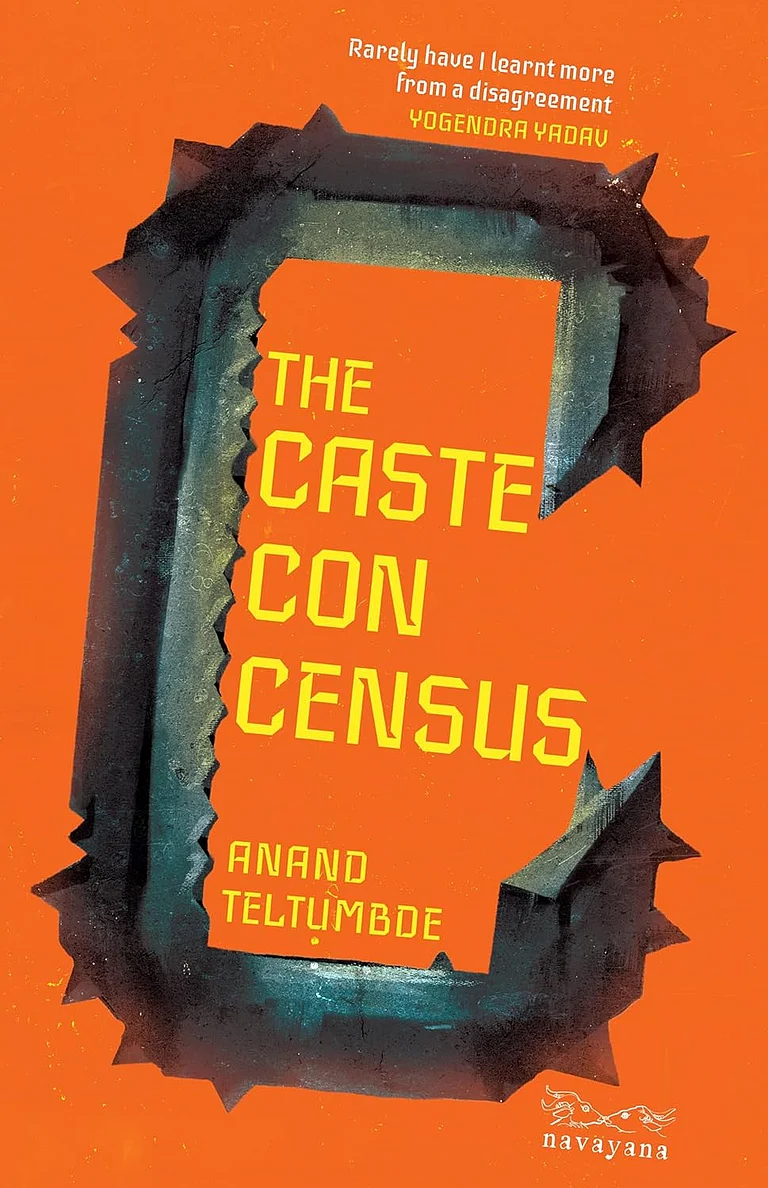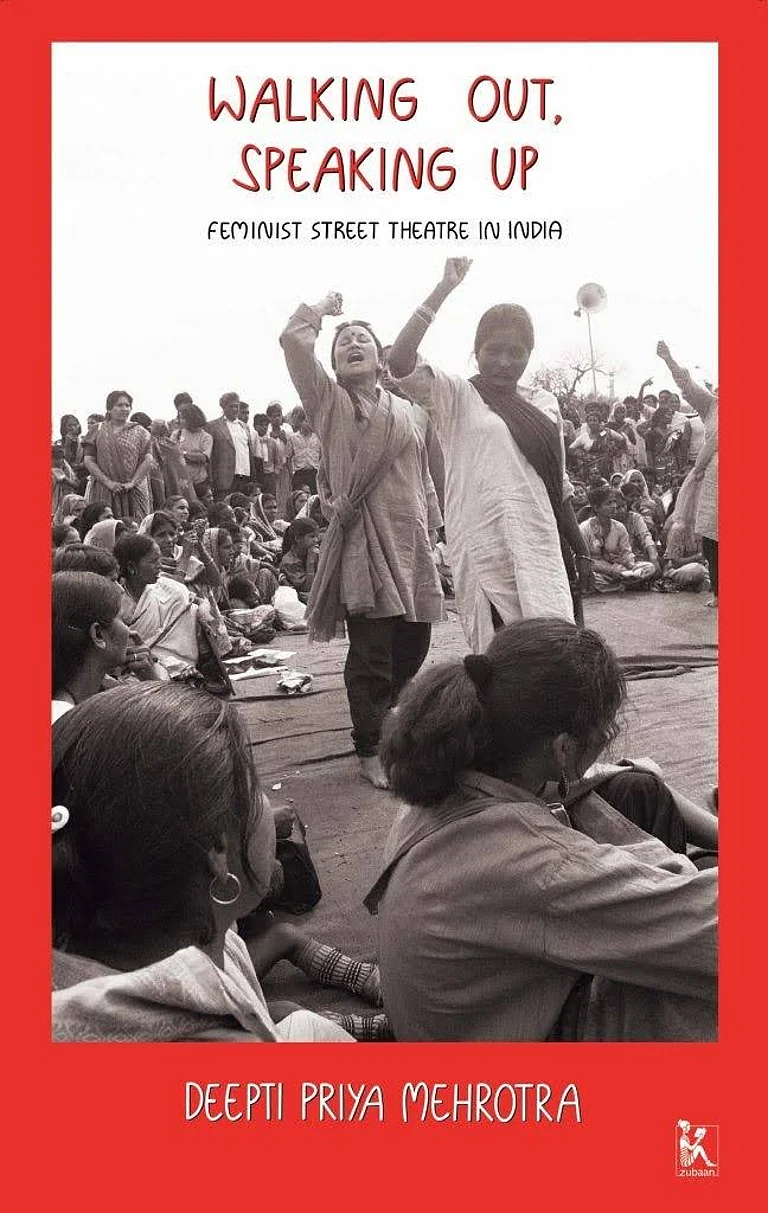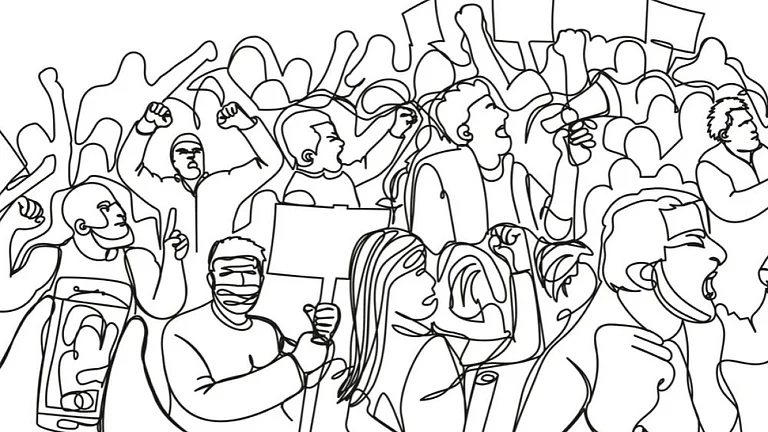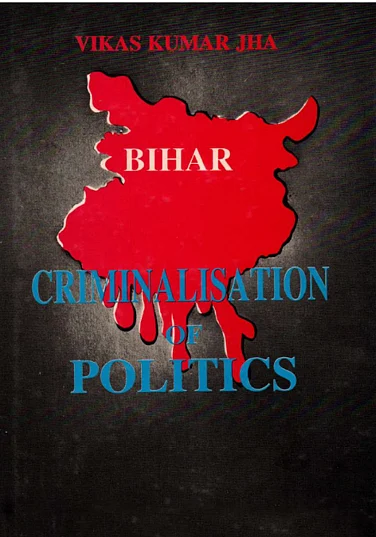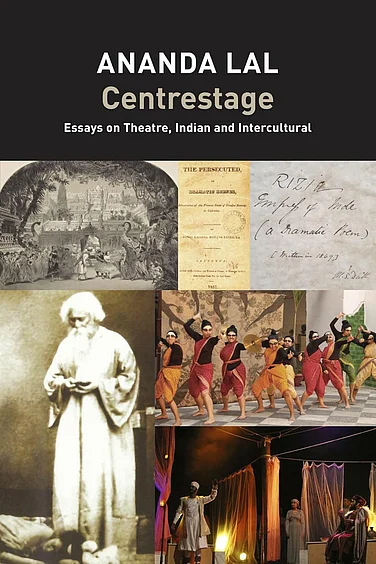The first indication of the presence of a subterranean habitat in Go-aah is its odour.
It is the smell of thousands of people living underground, in poorly ventilated close confines and the reek of slow-moving streams of warm sewage flowing through in-built canals, combined with the amalgamated stale stench of years of human sweat, that cakes the dimly lit underground walls and passages.
Some of the subterranean habitats, like those in the mining areas, are housed in hollowed-out cavities of spent mining pits. Others, like the Parra cavern, have been dug deep and wide into the earth. Some of them are several hundred metres deep below the surface, spread over a few kilometres. This particular cavern accommodates subterraneans from Mapusa and nearby villages.
Sandeep is frisked by the Bratva guards after he steps out of the metro and makes his way to the cavern’s entrance. He crushes a small ball of perfumed gel and smears it near his nostrils to beat the foul odour.
It’s about nine in the morning. Hundreds of hairless and weary subterraneans trudge to the metro station to board their respective Rust Red rakes to work. Sandeep is one of the few people walking into the cavern, but he is the only one sporting hair. At the barricaded gate, he places his press card in a scanner. The gate opens. Media credentials could still get you access to the subterranean caverns.
He steps into a gigantic elevator, one from a network of large, crudely constructed metal platforms that glide up and down the cavern’s length, ferrying inhabitants to their respective levels.
Sandeep steps off the elevator at the least-inhabited, bottom-most level. He is the only one to alight there. He walks into a dark tunnel that snakes its way deeper into the underground’s deepest bowels. After walking through the narrow tunnel for a couple of minutes, Sandeep is relieved when he sees a light flicker at a distance.
The tunnel opens into a small cave, with a large termite mound at its centre. And in the midst of the crusty mound, is a grizzled old man. The termite mound has grown around him up to his waist. The white ants have burrowed narrow pathways across his chest, face and arms, lining these channels with soft, dark brown droppings. The milky-white insects crawl along the complex arterial network they have built across the expanse of his body. The termites have also inched their way into his mass of matted hair.

It’s obvious that Claud the Clairvoyant hasn’t moved for years now. Seated beside him on the cave’s rocky floor, a few feet away, is a short, lean woman, wearing a black smock. She is surrounded by a heap of river pebbles. She looks up at Sandeep, who stands in the doorway and then goes back to writing her scrawl on a smooth pebble with a laterite rock.
Sandeep has met Claud the Clairvoyant on several occasions earlier. But the journalist was meeting him after many years this time. The last time he met Claud, the termite mound had barely crept up to his thighs. Claud looks at Sandeep, the former’s electric eyes scanning the man before him.
With his dark skin, crisscrossed by termite highways and his matted hair, Claud had the combined appearance of Bob Marley and Shiva, with a little bit of Nilu Phule thrown in.
For years, medical experts were unable to crack the code of Claud the Clairvoyant’s means of subsistence. The wizened sage had not budged an inch for a couple of decades, nor was he known to have eaten even a morsel of food or drink in that period.
But there was a legend doing the rounds in the subterranean world. According to the legend, the very termites that slowly feasted off his body, also nourished him symbiotically through their secretions.
For the subterraneans, Claud the Clairvoyant was the Rakhondar (Guardian) of the caverns. He was a young, poorly funded permaculturist, who was corralled into the caverns during the first round of shepherding of the ‘financially unviables’ by the Democratic Corporation of Go-aah. But once inside, it was Claud who had found a way to plant the first fruit-bearing trees in the deep underground. A botanist by training, Claud had tweaked guava, figs, papaya, limes, mulberries and various other berry saplings to develop hardy plants that could grow in the absence of sunlight and little water. The harvests of fresh fruits had helped stave off an epidemic of scurvy—especially among young children—in the underworld, which had set in a few years after the relocation.
The ‘miracle’ of growing the first trees in the underworld and the end of scurvy cases made Claud a holy hero among the subterraneans.
The birth of a subterranean hero, however, was not something the Corporation could afford to have on its hands. A hero, who could potentially lead a rebellion, needed to be smothered at the earliest. The Corporation tried to do just that. It issued a diktat, banishing his movement. Claud was formally barred from moving out of the Parra cavern.
Claud’s response to the ban on his movement was remarkably revolutionary. He publicly pledged to not move at all, relegating himself to a cave at the bottommost level of the Parra cavern. Initially, a shocked population rushed to the cave with concern and food for the Rakhondar. Claud welcomed their concern, but rejected the edible offerings. He physically shrank from the lack of nutrition. That was when the termites warmed up to him.
Over a period of time, a termite mound grew around his feet, creeping slowly up to his waist, giving Claud an almost deity-like appearance. Men, women and children from the subterranean world flocked in curiosity and reverence to see the man and the miracle sustained by termites. His popularity among the subterraneans eventually forced the Corporation to lay off Claud. They let him be. Banished to the underground.
The woman seated by Claud, writing on pebbles with laterite shards, was Chainika Sinhalata. Chainika first visited Go-aah from Delhi as a journalist, but stayed on as a chronicler of subterranean life.
The woman seated by Claud, writing on pebbles with sharp laterite shards, was Chainika Sinhalata. Chainika first visited Go-aah from Delhi as a journalist, but stayed on as a chronicler of subterranean life. She gave up the posh apartment she had purchased in the overworld and opted to live in the cave, where she wrote a detailed account of her transition, on pebbles. Over time, she mastered deciphering Claud’s cryptic utterances, spoken whenever his subterranean devotees sought answers to life’s mysteries. Each follower would enter the cave with humble pebble offerings and depart with Chainika’s inscriptions carefully etched upon them.
Sandeep reached into his pocket and fished out a few pebbles, which he placed on the heap before Chainika. Then he turned towards Claud.
Bowing his head, Sandeep swiftly shares the story of his assault and his inability to deal with the ominous consequences of his run-ins with Vikramaditya and Joy.
“No, not like that. With every detail… Tell your story like you are living it now,” Claud interrupts.
Sandeep now retells the story, frame-by-frame, as Claud listens to him with closed eyes.
The journalist relives his recent traumas, finding therapeutic release. Claud interrupts him again, but this time with open eyes.
“The seeds of a tree fall at its roots... The seed of your answer… also lies in the place where your blood has spilled,” he mumbles. As the sage speaks, the termites on his upper torso seem to move faster. Their white, pellet-like bodies zip along their exclusive highways, running through Claud’s flesh.
At that point, Claud turns to look at Chainika. On cue, she picks up one of the pebbles that Sandeep had placed on the heap before her. She dips a sharp laterite shard in a bowl of water and starts scribbling on the stone with its pointed end. Once done, she brings the pebble close to her mouth and blows on it, to dry the moisture from her chalky scribble and tosses the stone towards the journalist, who catches it.
“The answer lies in the very place where HE fell,” the handwritten inscription on the pebble reads. He pockets the stone and acknowledges Chainika with a nod.
Claud’s prophecies and disclosures, invariably layered in mystique, had worked out well for him before. The sage had tipped him off about carcinogenic milk being imported from Ethiopia for consumption in the subterranean areas. “The milk… from the breast of Africa… will curdle our lives,” Claud had warned Sandeep. Interpreting that message, Chainika had scribbled just one word on the pebble: ‘Ethiopia’. Later, Sandeep spent two months uncovering Vikramaditya’s conspiracy to import the formalin-laced milk consignment.
“And now, where is my reward?” Claud mutters, as Sandeep wonders about his latest seed and blood analogy.
Isolated in his cave, Claud relied on devotees for worldly updates. In exchange for his revelations, as a reward, he sought information about the Overworld, a key ingredient for his prophecies. Sandeep knew exactly the kind of information that the clairvoyant was keen on.
“Vikramaditya plans to kill Go-aah’s last tiger soon. I thought you would want to hear about this.” Sandeep’s words appeared to agitate the termites on the sage’s skin.
From his termite mound, Claud had tried to rally the subterraneans against the indiscriminate killing of Go-aah’s tigers. “The jungle lives off the tiger,” he would tell everyone, including young children. The tiger, he maintained, was nature’s prowling enforcer of balance. Ranga Parab’s Bhuierantle Munis too took his teaching to heart.
While Vikramaditya’s tiger-hunting exploits did cause uproar among the subterraneans, the anger still hadn’t spilled over to the surface.
Claud processed the information and opened his eyes again.
“The sea will bring him back… But the tigress won’t let him return.”
Chainika blows over another pebble and hands it over to Sandeep.
The text on the pebble reads, “Some go to Istanbul to see paradise before death.”
“Wait. I don’t quite understand… He’s going to die? At whose hands? Ranga Parab?” a perplexed Sandeep asks Claud, who looks at Chainika and grunts a response.
Chainika hands the journalist another pebble, which simply says “No. Charles Bronson”!
At Solar Anjuna, ahead of his meeting with the Chief Director that evening, Neil puts on the same black suit that he wore to his parents’ funeral at Joida.
He stands before a digital mirror, which is designed to identify and flag fashion faux pas like creased sleeves, button mishaps, clashing colours and other couture incongruencies. The mirror was a gift from Nihal. But Neil isn’t driven by fashion etiquette. The suit, his parent’s last gift, clad him with the much-needed cloak of confidence, ahead of one of the biggest meetings of his life.
(Excerpted with permission from the author)
MORE FROM THIS ISSUE
Mayabhushan Nagvenkar is a writer based in Goa. Goa < 2075 is his debut novel








